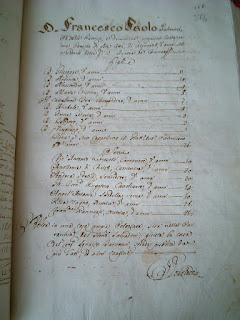Discovering the city of Bari
part 2
The old town preserves the history of the city.
The old quarter was surrounded by a boundary wall of which only the side on the
sea now remains, “la Muraglia” (the Wall), which was lapped by
the sea until 1930.
The view
you can have from Via Venezia towards Piazza del Ferrarese is very
enchanting.
Following
the boundary wall, on the left, you can see one of the best views of Bari: the
small harbour, palm trees, the Trajan colonnade, the Margherita Theatre, and farther away
the Barion Boat Club, the illuminated seafront. Then you arrive at the Fortino of S.
Antonio Abate, a tower of the 14th century with a
wonderful panorama from the top and an exhibition area at ground level. Inside
the Fort, there was a chapel dedicated to the Patron Saint of the animals, S.
Antonio, who, according to tradition, are blessed on 17th January.
Proceeding
along the Wall which overlooks the Basilica of S. Nicola and its Corte del
Catapano, as far as the Monastero di Santa Scolastica, you can take in
the waterfront at a glance.
Finally,
you can go down in the heart of the old quarter, in a maze of alleys and small
squares, walking on black and white lava stones (“chianche”). The architecture
has preserved the various styles, which are the remains of ancient
civilizations: every corner is a pleasant discovery.
The old town may be considered as
an independent
town within Bari, lively, with its symbols and traditions such as S. John’s Night
(on 23rd June). On this day the women of the old quarter make the
“orecchiette” by hand (a typical Apulian pasta) and offer them as a good omen
and sign of hospitality. This is a typical traditions in the city of S. Nicola,
the thaumaturgist and Patron Saint of children. The wonderful Basilica was
built for his cult, a great Romanesque church which hosts in the crypt the
bones of S. Nicola stolen from Mira by 62 seamen of Bari. There are two feasts
that celebrate the Patron Saint: the first from 7th to 10th
May, which attracts pilgrims from all over the world. It’s celebrated with an
extraordinary historic parade where the statue of the Saint is carried out the
sea on a fishing boat. The other is held on 6th December, in which
the inhabitants of Bari take part with their folk customs, such as the
pilgrimage of girls looking for husband. As often occurred in many seaside
towns, our adverturer seamen chose S. Nicola to protect their trade, which
attracted people from all the Mediterranean Sea.
Leaving the
Basilica of S. Nicola, through via del Carmine, you can reach the Cathedral of
San Sabino with its monastery. The old quarter is rich in convents,
cloisters and sacred shrines, all vestiges of ancient communities: for example,
the Venetians founded the Church of S. Marco, the orthodox church has
the Church
of S. Giovanni Crisostomo. History has it that the nearby Arco delle
Meraviglie was built by a Lombard family during the night, so that
two lovers could meet. The Arabs left their marks too: the “Capa dù Turk”
(Turk’s head), a bas-relief of the head of a Moor who was decapitated because
he ventured out during a witch’s night when it was better not to go for a walk…

Near the
ancient Cathedral
of San Sabino, a remarkable example of the Apulian Romanesque style,
you can find the Norman-Swabian Castle built outside the old quarter and
protected by a moat. The castle is surrounded by two orders of walls, the
taller and narrower are those inside built by the Normans (to defend themselves
from attacks), the lower and larger those of the exterior built by the
Aragonese (to resist cannonades). The interior of the castle is worth visiting:
arches, gateway, halls, courts which remind you of ancient times. The castle
hosts also exhibitions and cultural events. The old quarter is rich in patrician
residences like the Palazzi Alberotanza, Starita or Tanzi, and the places
of the authorities like those of the Dogana and Sedile which give onto Piazza
Mercantile. In a corner of the square you can find the “infamous column”,
where the insolvent inhabitants were pilloried.
The old quarter
is lively with its restaurants and cafes at night. It’s rich also in cultural
activities in the Murat Hall and in the church of the Vallisa
which is now an auditorium; but the atmosphere is so quiet in the old quarter
in the mornings, that you can go shopping leisurely among old workshops and
little shops.
It’s not so
easy to describe the old town: there’s a lot of history to tell and many things
to discover.
Source:
Flash Tour, printed in Italy on 2007.




































